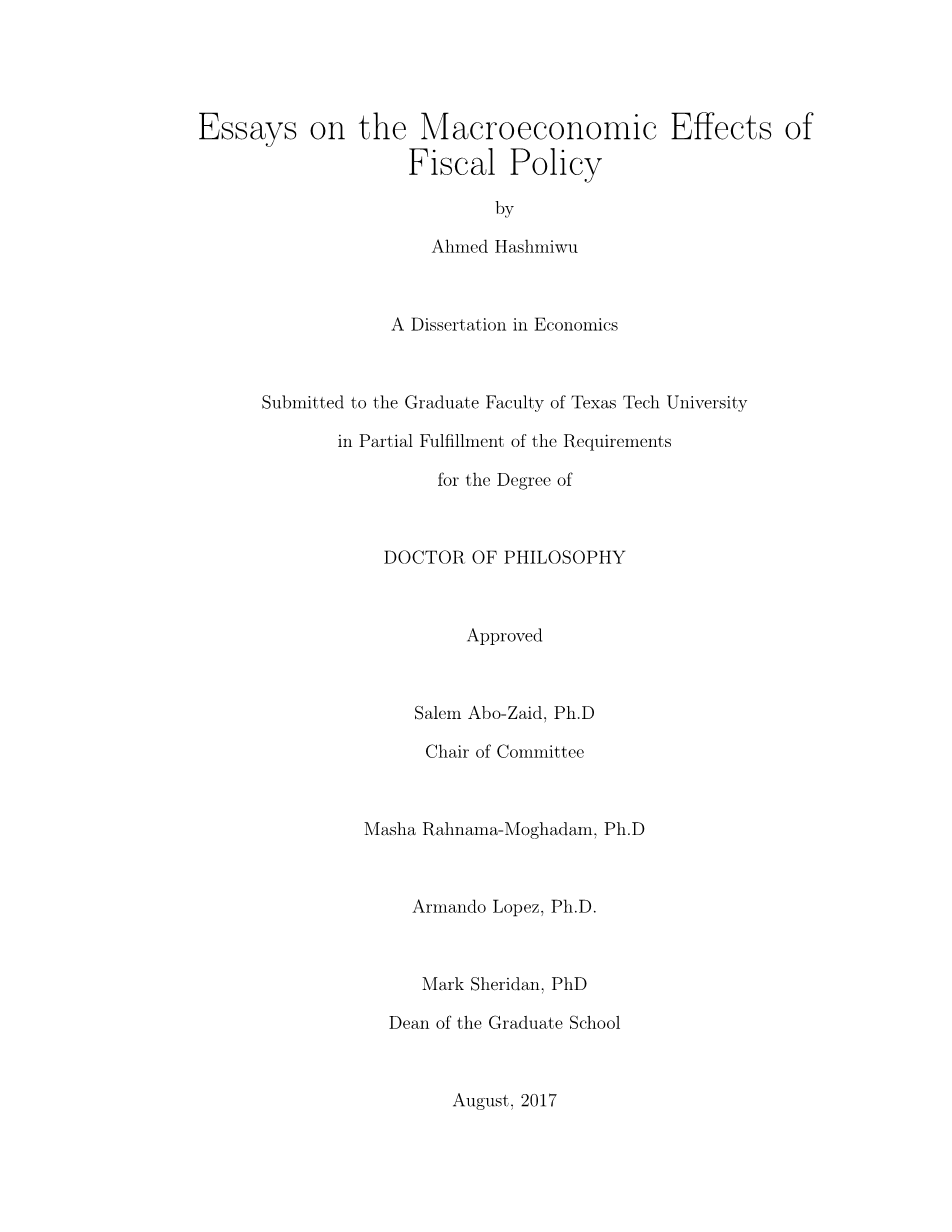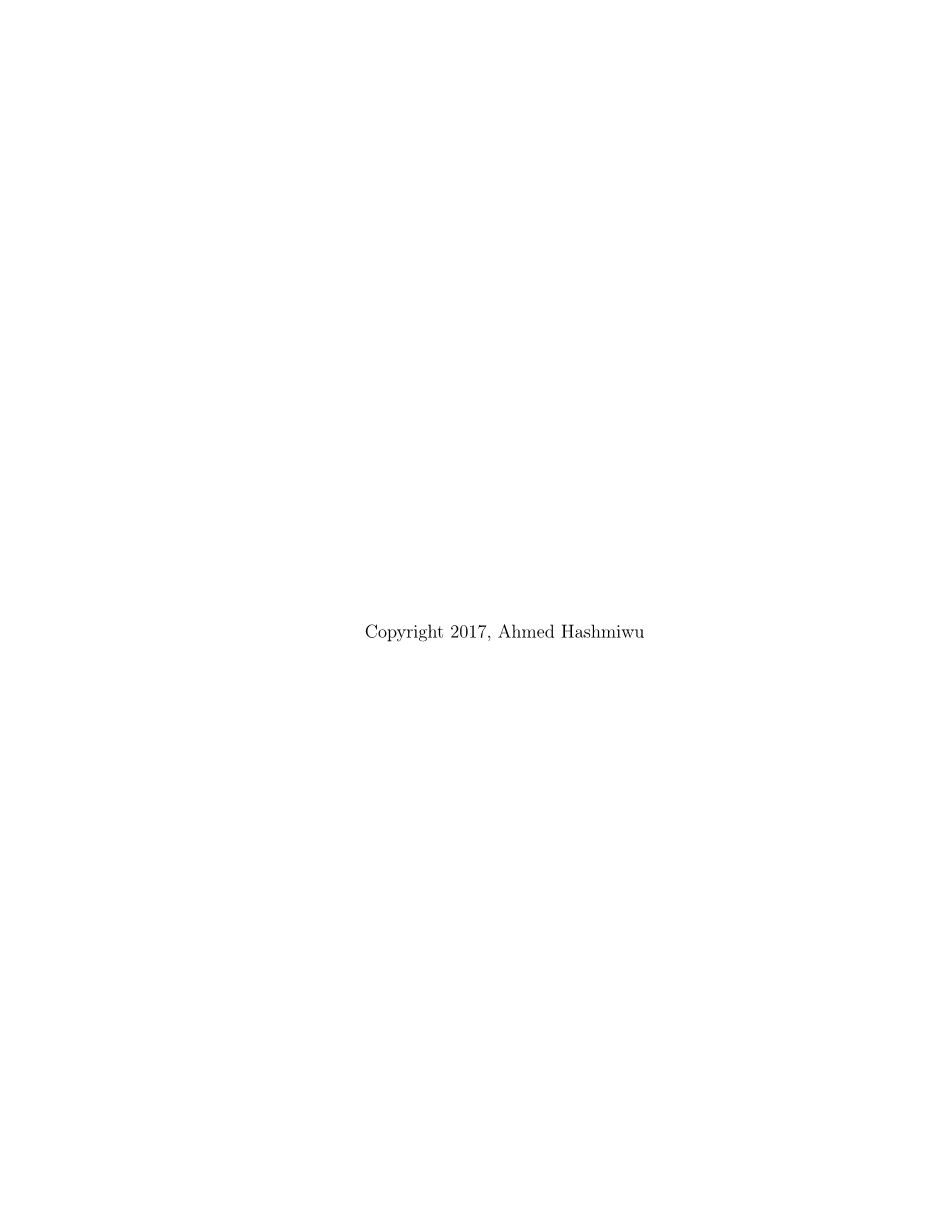

英语原文共 118 页,剩余内容已隐藏,支付完成后下载完整资料
- 财政政策对宏观经济的影响
参见Ilzetzki(2011)、Erceg(2007)、Leeper(2011)等的研究,我们可以发现这样的一条共识:经济和小型开放经济已被广泛记录,政府支出乘数大小的差异在封闭式之间,而封闭经济体的乘数大于小型开放经济体的乘数。而在这种情况下,不考虑其他结构特征的开放性部分可能重新划分,这些差异往往被归结为程度的不同,比如非正规部门的规模。经验证据表明:小型开放经济体也与相对较大的非正式部门相关。巧合的是,非正式部门也伴随着更高的通胀和相对更不稳定的消费,这两者都是政府支出乘数的重要决定因素。
在本文中,将会利用传统的新凯恩斯主义来解释非正规部门的模型,并利用该模型分析政府支出对宏观经济的影响。特别地,本文还研究了政府支出乘数的大小,对于不同比例的非正规经济,而不考虑开放的程度。同时,还研究了开放和非正式对乘数的共同影响,使两者都在经济中发挥作用。此外,本文分析了乘数在制度变迁和法治背景下的行为,这是与非正式部门相关的文献中的重要特征。最后还审查了其他因素的作用,如失业和逃税,这是非正规部门劳动力供应的替代驱动因素。
本文的研究结果如下:第一,非正规部门体现在,乘数主要通过供给侧来反映,只有在价格上涨时才允许调整。然而,经济的开放表现在需求方面,而不考虑价格刚性的程度。此外,如果在正常时期加以审查,乘数就会随着非正式部门的规模而下降,就象随着开放程度而下降一样。在一个没有非正规部门的模型中,如Christiano(2011)所提出的那样,实际利率随着政府支出的增加而上升。这将对消费产生负面影响,并由此产生乘数效应。对于非正规部门,主要在正规部门征收的必要税率比政府支出的任何增加都要高。因此,在正规部门吸引和留住工人所需的额外报酬较高,导致公司的边际成本增加,这将会增加通胀和实际利率的上行压力。结果,消费下降更多,导致乘数更小。相反,当经济陷入流动性陷阱时,如名义利率的零利率下限,乘数随非正式部门上升,主要是实际利率的额外下行压力所导致的。
其次,当我们联合考虑非正式部门的性质和经济的开放程度时,乘数低于单独考虑每个情况时的乘数。由于开放经济的漏洞,由政府开支增加引起的总需求增加的一部分是由进口的增加而不是国内产出的增加来满足的。根据Ilzetzkietal(2011)所发表的文献来看,与封闭经济相比,开放经济由此产生的乘数更小。此外,非正式部门的存在通过产生更高的通货膨胀来扩大这些影响,从而导致消费的进一步下降,并如我们所预料的那样,乘数也随之下降。
这些结果对于价格刚性程度的变化、政府支出的持续性以及政府支出在产出中所占比重的变化都是稳健的。这强调了非正规部门在经济中的重要性,以及为什么在评估财政政策时必须考虑到非正规部门。因此,从实证结果得出的结论是,在不承认非正规部门作用的情况下,将政府支出乘数规模的差异归因于经济的开放程度是有缺陷的。
另一个重要的结果是,流动性的乘数并不总是很大。由于陷阱期比正常时期要长,特别是在税收被扭曲的时候,这在一定程度上与文献中的发现相矛盾。一般而言,流动性陷阱时期比正常时期要短,例如在一笔过征税的模式中,多次征税导致流动性陷阱时期比正常时期要短。但是无论是否存在非正规部门,Tiplier在流动性陷阱中的规模都明显大于正常时期。然而,如果我们假设,在一个赤字融资体制下,政府支出同时也伴随着税率的下调,就像经济衰退中经常出现的情况一样,这两个乘数之间的差异就会消失。当税率下调幅度明显较大时,流动性陷阱时期的乘数效应将小于正常时期。
直观地说,降低税率会对乘数产生两种影响:一种是通过家庭可支配收入的增加,另一种是通过劳动力供应增加导致的公司边际成本的下降。这两个因素在正常时期都会对乘数产生积极的影响。然而,在流动性陷阱中,由于相对较低的通胀率,边际成本的下降会对乘数产生负面影响。相比之下,可支配收入的增加对乘数的影响是积极的。当减税幅度足够大时,这两个因素在正常时期的综合效应超过了流动性陷阱时期的净效应,导致正常时期的乘数大于流动性陷阱时期的乘数。此外,由于非正规部门对通货膨胀的放大效应,如果将非正规部门考虑在内,这种情况更有可能发生。
此外,与实证结果一致,通胀会随着更好的制度以及法治而下降。正如我们所预料的那样,乘数随着这个变量的增加而增加。税务审计的可能性随着体制改革、执法实践和更好的法律而增加。因此,税率,这主要是在正式征收部门,随着政府支出的增加而增加的数量减少;原因在于,首先,由于来自非正规部门的额外收入;其次,由于收入较低劳动力从正规部门向非正规部门的流动。因此,边际成本和实际利率上升幅度较小,这意味着一个相对更大的乘数。
最后,对于任何给定的非正规部门份额,乘数在什么时候更大,那么劳动力从失业向非正规就业的转化率就会较高。但是,乘数越小,从就业到非正规就业的劳动转化率越高。直觉上而言,如果一个工人突然失去了他在正规部门的工作,由于经济活动少,将会导致家里的流收入下降。与此同时,由于劳动力需求下降,企业的边际成本下降。但是,如果工人在非正规部门的家庭经营企业中寻找替代就业,家庭收入方面的部分损失将得到减轻。因此,家庭消费下降幅度较小。因此,由此产生的乘数相对较大。另一方面,如果工人自愿离开他们的工作,而在正式部门寻求就业,在非正规部门为了逃税,特别是在过渡期间如果没有刹车就业,那么家庭的收入可能不会受到明显影响。然而,由于劳动力供给的减少,企业的边际成本上升,由此导致的通胀上升给实际利率带来了上行压力。因此,由此产生的乘数更小。
Differences in the size of the government spending multiplier between closed
economies and small open economies have been widely documented. The consensus
is that the multiplier is larger for closed economies than for small open economies;
see Ilzetzki et al., (2011), Erceg et al. (2007), Leeper et al., (2011), among others.
While this is the case, these differences have often been attributed to the degree of
openness without considering other structural characteristics that could be partly re-
sponsible, such as the size of the informal sector. Empirical evidence suggest that
small open economies are also associated with relatively larger shares of the informal sector (see for example Loayza and Rigolini, 2006 and Schneider, 2007). Coinciden-tally, the informal sector also comes with higher inflation and relatively more volatile consumption, both of which are important determinants of the government spending multiplier.
In this paper, I account for the informal sector in a traditional New Keynesian
(NK) model and use the resultant framework to analyze the macroeconomic effects of government spending. In particular, I examine the size of the government spending multiplier for varying shares of the informal economy, irrespective of the degree of openness. I also examine the joint effect of openness and informality on the multiplier by allowing both to be operative in the economy. In addition, I analyze the behavior of the multiplier in the context of institutional change and rule of law, which are important features in the literature pertinent to the informal sector. The role of other factors such as unemployment and tax evasion, which are alternative drivers of labor supply to the informal sector are also examined.
The findings of the paper are as follows: First, the informal sector manifests in
the multiplier primarily through the supply side, and is operative only if prices are
allowed to adjust. However, openness in the economy manifests through the demand side, irrespective of the degree of price rigidity. Also, when examined during normal times, the multiplier falls with the size of the informal sector, as it does with the degree of openness. In a model without the informal sector, as in Christiano et al.,2011, the real interest rate rises following the increase in government spending. This generates a negative effect on consumption, and for that matter, the multiplier. With the informal sector, the requisite tax rate, primarily levied in the formal sector, is higher for any given increase in government spending. Consequently, the additional compensation needed to attract and retain workers in the formal sector is higher, resulting in an increase in the firmrsquo;s marginal cost. This adds to the upward pressure on inflation and the real interest rate. As a result, consumption falls more leading to a smaller multiplier. In the contrary, when the economy is bound in a liquidity trap,as in the Zero Lower Bound (ZLB) of the nominal interest rate, the multiplier rises with the informal sector, primarily due to the added downward pressure on the real interest rate.
Secondly, when we jointly account for properties of the informal sector and openness in the economy, the multiplier is lower than when each case is examined separately. Because of the leakages in the open economy, part of the increase in aggregate demand, arising from the increase in government spending, is met by an increase in imports rather than an increase in domestic output. In conformity with the literature(Ilz
剩余内容已隐藏,支付完成后下载完整资料
资料编号:[419259],资料为PDF文档或Word文档,PDF文档可免费转换为Word
以上是毕业论文外文翻译,课题毕业论文、任务书、文献综述、开题报告、程序设计、图纸设计等资料可联系客服协助查找。


